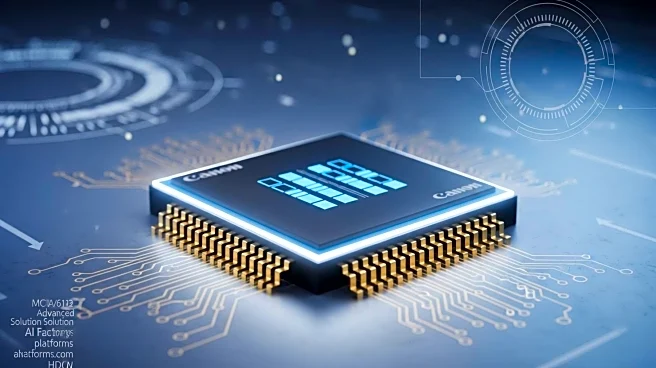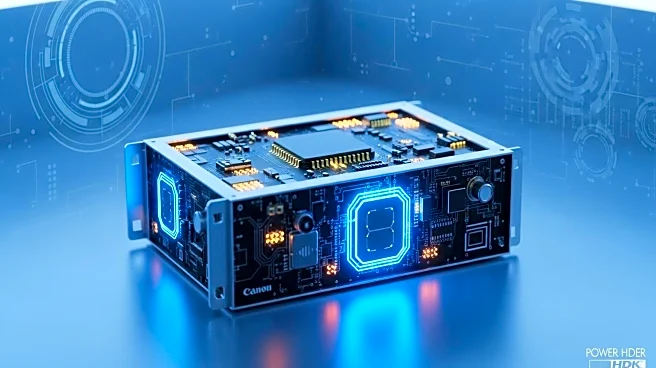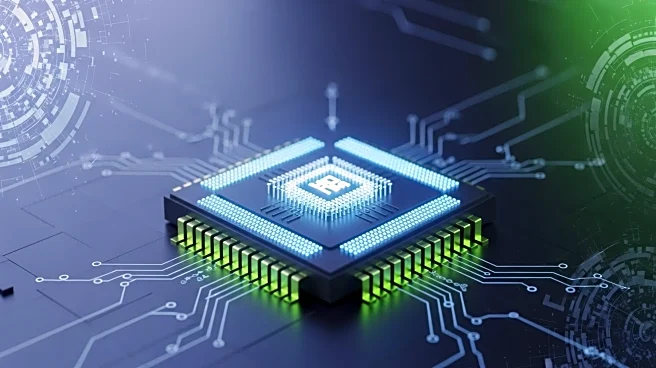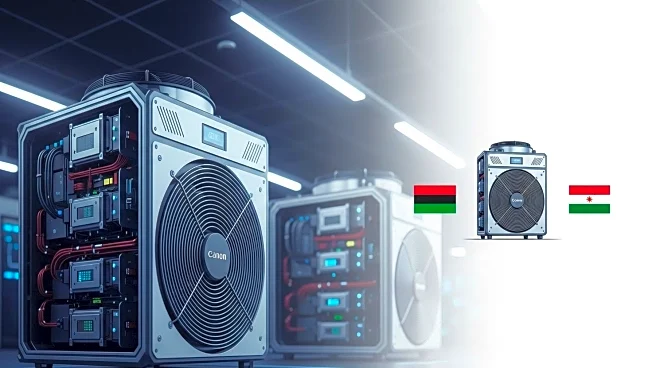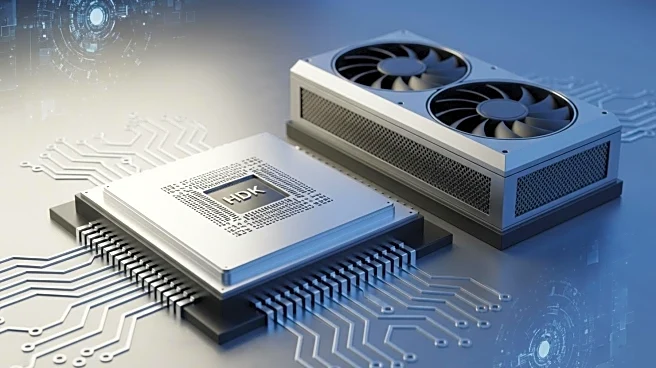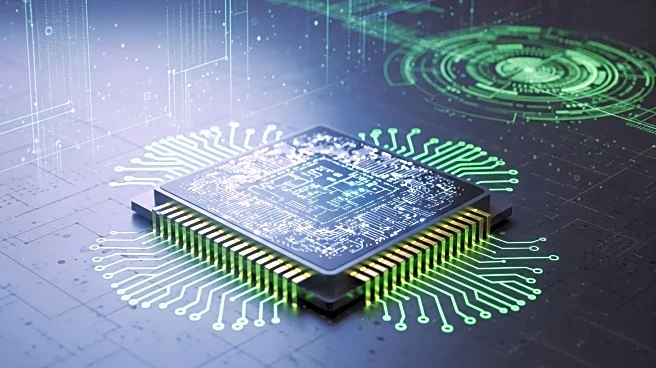What is the story about?
What's Happening?
Navitas Semiconductor has announced the development of advanced 800 VDC voltage GaN and SiC power devices to support NVIDIA's next-generation AI factory computing platforms. These new devices are designed to address the power challenges posed by AI factories, which require high power density and efficiency. Traditional data centers, relying on legacy 54 V power distribution, are unable to meet the demands of modern AI computing platforms. The 800 VDC architecture offers higher efficiency, scalable infrastructure, and simplified power distribution, directly converting utility power to 800 VDC within data centers. This approach eliminates multiple conversion stages, enhancing energy efficiency and system reliability.
Why It's Important?
The development of 800 VDC power architecture is significant as it represents a fundamental shift in data center power distribution, crucial for supporting the growing demands of AI and high-performance computing workloads. By enabling direct power conversion and reducing resistive losses, this architecture enhances efficiency and scalability, aligning with global low-voltage DC standards. The transition from legacy power systems to 800 VDC is transformative, potentially setting new benchmarks for data center operations. This innovation could benefit industries reliant on AI, offering improved performance and reliability, while also supporting environmental goals through reduced copper usage and energy losses.
What's Next?
Navitas Semiconductor plans to continue its collaboration with NVIDIA and other stakeholders to further refine and implement the 800 VDC power architecture across AI data centers. The company is offering samples, datasheets, and evaluation boards to qualified customers, indicating a move towards widespread adoption. As the industry shifts towards megawatt-scale AI computing platforms, Navitas' GaN and SiC technologies are expected to play a pivotal role in meeting the efficiency and reliability demands of next-generation data centers. This could lead to increased partnerships and innovations in power semiconductor technologies.
Beyond the Headlines
The introduction of 800 VDC power architecture may have broader implications for the semiconductor industry, potentially driving advancements in power conversion technologies and influencing global standards for data center operations. The focus on high-efficiency and high-density power solutions could spur further research and development in wide bandgap semiconductor technologies, fostering innovation across various sectors. Additionally, the environmental benefits of reduced copper usage and energy losses align with global sustainability goals, highlighting the role of technology in addressing climate change challenges.
AI Generated Content
Do you find this article useful?


